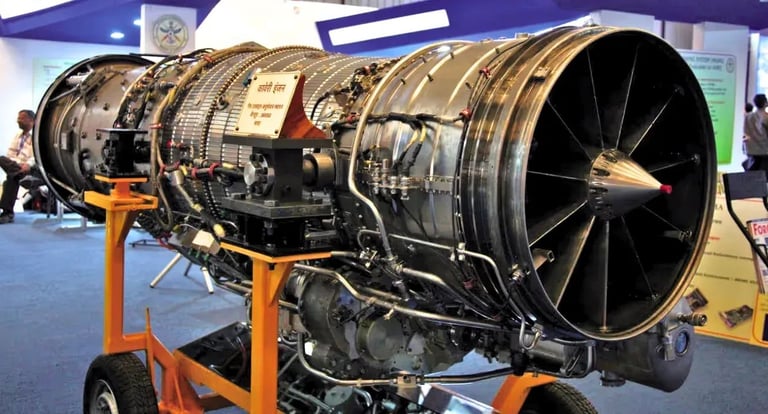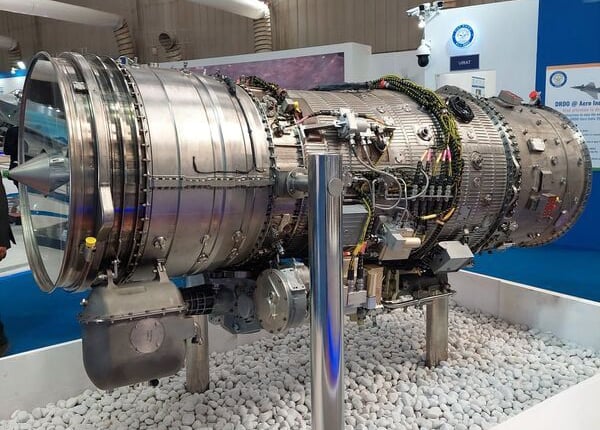Kaveri Engine: Powering India’s Aerospace Independence
India’s Kaveri engine project, initiated in the 1980s, was born from an ambitious vision: to develop a completely indigenous jet engine capable of powering the country’s fighter aircraft, particularly the HAL Tejas Light Combat Aircraft (LCA). Led by the Gas Turbine Research Establishment (GTRE) under the Defence Research and Development Organisation (DRDO), the project was symbolic of India’s desire to break free from dependence on foreign propulsion systems.
IN BRIEF
Thinkbrief
7/13/20253 min read


India’s Kaveri engine project, initiated in the 1980s, was born from an ambitious vision: to develop a completely indigenous jet engine capable of powering the country’s fighter aircraft, particularly the HAL Tejas Light Combat Aircraft (LCA). Led by the Gas Turbine Research Establishment (GTRE) under the Defence Research and Development Organisation (DRDO), the project was symbolic of India’s desire to break free from dependence on foreign propulsion systems. However, despite decades of effort and considerable financial investment, the engine never reached operational status. Understanding the motivations, failures, and future of the Kaveri project is crucial to assessing India’s defense and technological aspirations.
The Aim and Scope of the Kaveri Project
The Kaveri engine was conceived as part of India’s broader self-reliance initiative in the defense sector, paralleling the development of the LCA Tejas. The goal was to design and build a low-bypass turbofan engine capable of generating 80–90 kN of thrust, with an afterburner module for supersonic performance. Beyond military use, success in this domain would have positioned India among the few nations with end-to-end jet engine manufacturing capabilities—a strategic asset in aerospace defense.
Financial Investment and Cost Analysis
The Kaveri project officially commenced in 1989 with an estimated cost of ₹382 crore (approximately $45 million USD at the time). Over the next two decades, costs ballooned to over ₹2,035 crore (around $300 million USD), largely due to design revisions, delays, and procurement of foreign testing facilities. Despite this financial burden, the project did not deliver an engine suitable for integration with the Tejas, leading to its official de-linking from the fighter jet program in 2008.
Strategic Importance to India
At its core, the Kaveri project was more than just a technological experiment—it was a strategic necessity. Jet engines are often subject to strict international export controls and serve as a critical chokepoint in indigenous aircraft development. India, as a rising military power, understood that true autonomy in defense manufacturing required propulsion capabilities to match its ambitions. Moreover, mastering jet engine technology has civilian spinoffs in aviation and industrial gas turbines, potentially transforming sectors beyond defense.
Why the Kaveri Engine Failed
The failure of the Kaveri engine was not due to a single flaw, but rather a confluence of technical, managerial, and systemic issues:
1. Technological Gaps: Jet engine development requires expertise in metallurgy, high-pressure turbines, thermal management, and materials science. India lacked experience in creating single-crystal turbine blades and high-temperature alloys essential for modern engines.
2. Project Management Challenges: The project suffered from shifting design goals, delays in decision-making, and insufficient collaboration with international experts in its early phases.
3. Limited Testing Infrastructure: India did not possess adequate high-altitude or supersonic test facilities, forcing GTRE to rely on foreign testing—delaying development and inflating costs.
4. Evolving Requirements: As the LCA Tejas design evolved, it outpaced the Kaveri’s capabilities, especially in thrust-to-weight ratio and reliability.
Despite these issues, partial successes were achieved: the core engine performed well in test beds, and the dry (non-afterburning) version was even tested on flying platforms like the IL-76.
A New Way Forward
While the Kaveri in its original form may have fallen short, it laid the groundwork for future indigenous engine efforts. In recent years, there has been renewed interest in reviving the project through international collaboration, notably with France’s Safran. The focus has now shifted toward developing a “Kaveri derivative” for future UCAVs (Unmanned Combat Aerial Vehicles) like Ghatak, or even for use in trainer and transport aircraft.
Moreover, India’s defense establishment is placing more emphasis on building ecosystems for materials research, precision manufacturing, and modular design—key for future success.
Conclusion
The Kaveri engine project may not have achieved its original aim, but its journey is a case study in the complexities of indigenous defense technology. Rather than marking a failure, it highlights the steep learning curve that comes with self-reliance in aerospace. With the right international partnerships, institutional reforms, and sustained investment, India still has the potential to fulfill the dream the Kaveri once symbolized: a jet engine made entirely at home.

